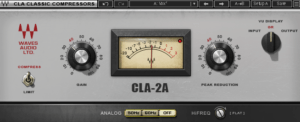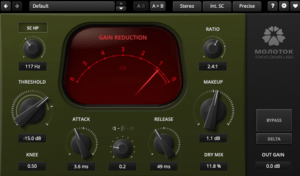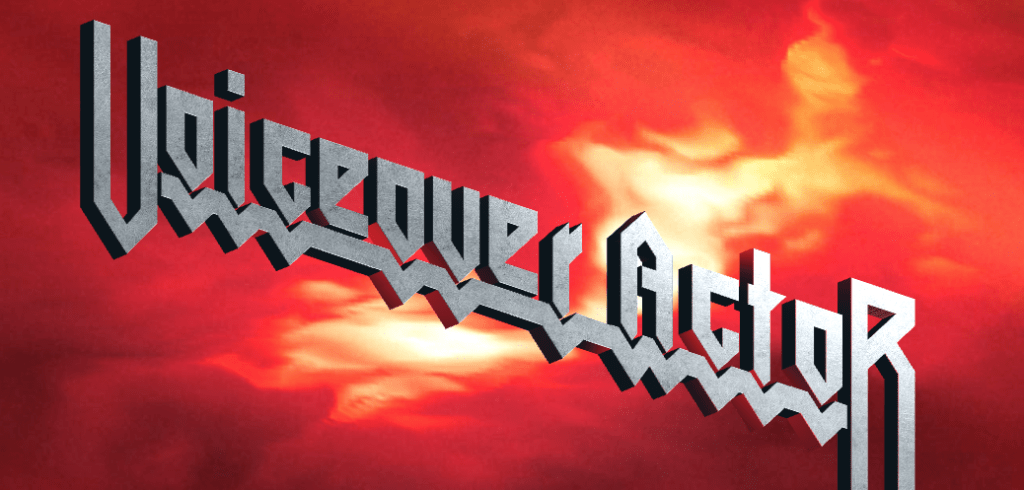One of my favorite things about voice acting is the variety of voiceover projects out there. For example, I have been the voice on a few Heavy Metal songs over the years, in the style of Queensrÿche, etc. It takes some specific studio wizardry to mix with a Heavy Metal Voice Over: Compressors. Using special techniques with compressors (hint: that’s “compressors” plural) are great for mixing voice overs for commercials and documentaries. Of course, as always, voice actors shouldn’t process voice over auditions for clients with this technique, or process them at all!
First, let’s look at the three main types of audio compressors: Opto, FET, and VCA. They each have different characteristics, and are used for different purposes. The main difference between them is the type of circuit they use, which defines the effect they produce. Let’s look at what each one does, and in doing so, come to the surprising conclusion of how to use compression most effectively for recording an in-your-face (but tastefully so) Heavy Metal Voice Over.
Opto, FET, and VCA Compressors
Opto (Optical) compressors Use a light bulb (or LED) and photocell to determine gain reduction, and are known for their smooth, and forgiving sound. They’re good for processing vocals, mastering, and smoothing out small peaks. Opto compressors are slower than FET compressors, so they’re better for preserving the natural dynamics of a performance. Some examples of Opto compressors include the LA-2A, Avalon AD2044, and Tube Tech CL1B. This excellent article from Forte Mastering explains how Opto compressors work.
Known for their fast, bright sound, punch, and color, FET (Field Effect Transistor) compressors are often used for percussive sounds and those sounds that need snappy transients. The circuit is very fast, and they’re often used in rock music for big drums, driving guitars, and punchy aggressive vocals. You know, Heavy Metal Voice Over with some oomph! However, FET compressors are less suitable for mastering a whole project rather than a single vocal track, because their aggressive nature and distinct coloration can make them less transparent and subtle. The Urei 1176 is an example of a famous FET compressor.
Lastly, VCA (Voltage Controlled Amplifier) provides a fast, peak-based compression. VCA compressors are good for transients, like drums and percussion. They are also good for parallel compression. VCAs are transparent and sound clean and smooth. While they can sound aggressive if pushed, the VCA can be the “best of both worlds” solution between the slower Opto compressor and the faster, punchier FET compressor. The SSL 4000 G and the API 2500+ are wonderful examples of well-known VCA compressors.
How to Compress a Heavy Metal Voice Over
If the VCA compressor is the best of both worlds, that’s the solution, right? Or, maybe should one just dial in their Opto compressor to be faster or their FET compressor to be slower? What if I told you there was a third way of processing voice overs that used multiple compressors? That’s right! The answer is to first use an Opto compressor to smooth things out, and then use a FET compressor to punch up the good parts. Consonants will be punchy but not clicky, and vowels will be smooth but not flabby. And then you’ll have that Heavy Metal Voice Over sound. However, when using Serial Compression, you can also experiment with using the FET compressor first in your chain and then the Opto compressor second for a punchier, brighter sound.
To hear the differences in using a single compressor versus an Opto>FET Chain versus a FET>Opto Chain with and without music, watch James Arter’s excellent video about using Serial Compression. He uses a Heavy Metal song as an example, but it’s relevant for voice over since the vocals are dynamic with a few strong plosives. It’s interesting to hear how each type of compression handles the voice.


For my Opto compressor, I use either the Waves CLA-2A or the Universal Audio LA-2A. For the FET Compressor, I use either the JS 1175 Compressor that comes with REAPER or the Tokyo Dawn Labs Molotok Compressor. The Molotok isn’t a classic FET compressor emulation, but it does something very similar that I like to hear. And that’s what it’s all about. Don’t just use the stock compressor that comes with vocal strip compressors. Unleash a royal rumble of tag-teaming compressors to give your vocals that big-presence Heavy Metal Voice Over sound. If you are first off using good mic technique and have good acoustics in your recording space, you may find that after clever, tasteful compression, there is no need for EQ at all.

